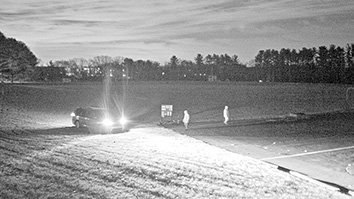Citation
Beaulieu, E. D., Ionescu, M., Chatterjee, S., Yokota, K., Trauner, D., & Lindow, S. (2013). Characterization of a diffusible signaling factor from Xylella fastidiosa. MBio, 4(1), e00539-12.
Abstract
Cell-cell signaling in Xylella fastidiosa has been implicated in the coordination of traits enabling colonization in plant hosts as well as insect vectors. This cell density-dependent signaling has been attributed to a diffusible signaling factor (DSF) produced by the DSF synthase RpfF. DSF produced by related bacterial species are unsaturated fatty acids, but that of X. fastidiosa was thought to be different from those of other taxa. We describe here the isolation and characterization of an X. fastidiosa DSF (XfDSF) as 2(Z)-tetradecenoic acid. This compound was isolated both from recombinant Erwinia herbicola expressing X. fastidiosa rpfF and from an X. fastidiosa rpfC deletion mutant that overproduces DSF. Since an rpfF mutant is impaired in biofilm formation and underexpresses the hemagglutinin-like protein-encoding genes hxfA and hxfB, we demonstrate that these traits can be restored by ca. 0.5 µM XfDSF but not by myristic acid, the fully saturated tetradecenoic acid. A phoA-based X. fastidiosa biosensor that assesses DSF-dependent expression of hxfA or hxfB revealed a high level of molecular specificity of DSF signaling.


